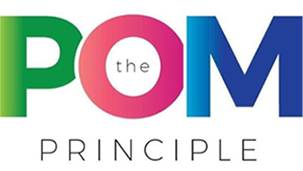During the past 30 years, I’ve worked with thousands of products and inventors. Many of them get stuck in that first phase. Some remain inventors by choice, creating widget after widget and successfully selling them to companies that do the rest. A very small percentage either do the rest themselves or hire the right people to build out a spark of an idea into something that is needed by a customer—and eventually loved by a customer.
3 Factors In Success
I’ve seen so many amazing products fail. Ironically, most are incredibly innovative and helpful with obvious consumers who would love to buy them. As a matter of fact, I would say that a majority of the most interesting and useful of products are ones that never see the light of day or succumb to a very short life.
Why?
The first factor is the people. Even the greatest products and ideas will not succeed without the right people driving them to market.
The second thing is that success requires super-human tenacity, people who refuse to take no for an answer. The most successful
entrepreneurs are unbelievably resourceful; they will create their own PhD without a day in college.
Third, the successful ones are adaptable and never married to their ideas or things changing into something else entirely. This stands true for inventors who just want to hand off their product to an entity that will develop it and bring it to market. They need to know how to make that happen in a way that pays them for their intellectual property in intelligent ways.
If they are not the one to take it to market, they must have the good sense to step out of the picture yet make a deal that is deserving of their creation while providing the freedom for life-giving breath.
The other kind of inventors create with the big picture in mind. They create a product for which there is a viable use, a company that supports scaling, and spend most of their time and money on marketing to keep finding customers who will buy it.
The Winning Framework
Three pivotal components of any business must be completed in order to get to the end of the rainbow. I call it the POM Principle.
“P” stands for product, “O” for operations and “M” for marketing. Your product could be an app, a food, a technology or a service.
All of the POM Principle must be set forth if you are expecting your venture to succeed.

P for Product. This is all it requires to have a widget, a finished product or service ready for sale. It includes all of the sourcing, costing, prototypes, market research, competitive analysis and consumer demand for whatever you want to create.
Before you produce any product, however, you must do a profile of who you think will buy it. After all, if you have no customers, you have no business. Everything about the development of your product must be based on who that customer is and why he or she might want what you have to offer.
O for Operations. This starts with a distribution methodology, the way you intend to sell your product. Direct sales on the web? In
a store? Through Amazon? Via direct response television or radio? Is it an OEM product (original equipment manufactured), such
as an Intel chip inside every Dell computer or B to B product? Is it a multi-level marketing concept? Will you wholesale only? Operations are underpinned by money that allows you to, well, operate. How will you capitalize it? What systems can you create that will allow you to roll out, launch and support your customer base before you have a large staff to manage it? What people are needed to make it go? Human capital is key.
M for Marketing. Marketing is anything you do to get your product off the shelf and into the hands of someone who not only wants to buy it but will pull out his or her credit card quickly to have it.
